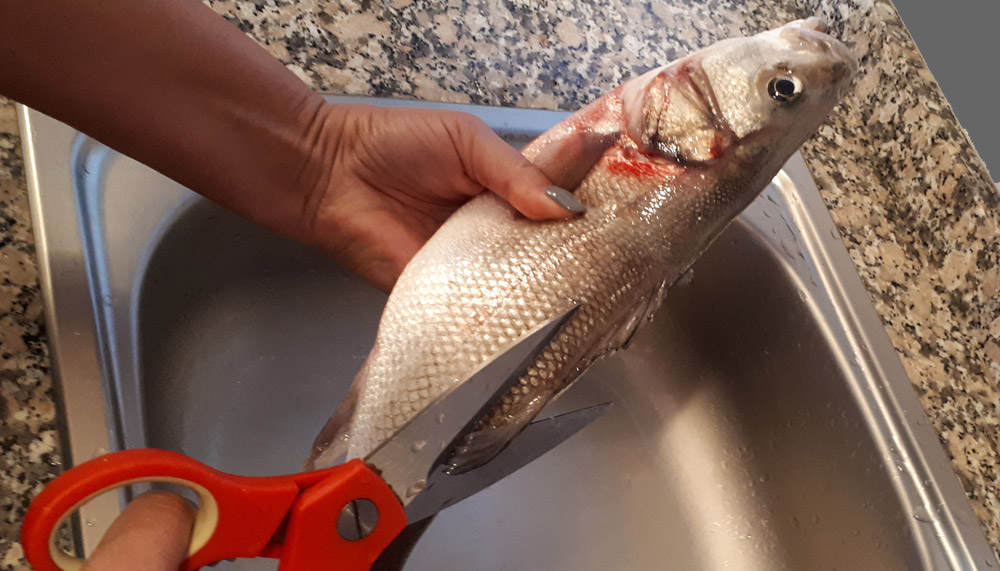
Why Fillet a Fish? 🐟🔪
Fishing, for many, isn’t just about the catch – it’s about savoring the freshest seafood meal possible. And what better way to do that than by mastering the art of fish filleting? When you fillet a fish, you’re ensuring every bite is free from bones, all the while retaining the delicate flavors and textures that seafood enthusiasts cherish.
Easier Than You Think! 😃👌
Many steer clear of filleting, assuming it’s a task best left to the pros. But here’s the catch – it’s not as tricky as it seems! With the right steps, some practice, and a dash of patience, anyone can turn their catch into perfect slices, ready for the skillet or the grill.
Tools of the Trade 🛠️
Before diving in, you’ll need a few essentials:
✅ A Sharp Filleting Knife: This is the star tool, designed to glide between the fish’s flesh and its bones.
✅ A Chopping Board: Preferably one with a groove to catch any juices.
✅ A Pair of Tweezers: Handy for picking out those sneaky, tiny bones.
✅ A Clean Cloth or Paper Towels: For wiping down and keeping things tidy.
🔶 Ready to get started? Let’s dive into the details and get you filleting like a pro! 🌟
🐙It is very important to know! Cooking fillets of freshly caught fish is the most important stage of fishing. A filleting knife is the perfect helper. Experienced chefs say that fish meat quickly gutted and separated from the bones is much tastier. Also fish fillets take up less storage space.
Filleting Techniques: Step-by-Step Guide to Precision Cuts
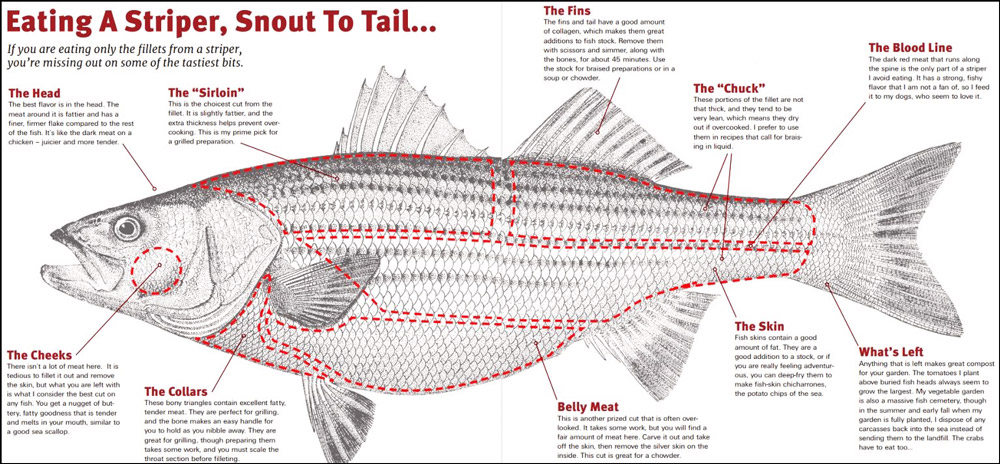
The Art of Filleting: Why It Matters
Filleting a fish is a culinary skill that not only allows you to create visually appealing dishes but also enables you to get the most flavor and texture out of your catch. It is a technique that involves removing the bones and skin of the fish to obtain clean and boneless pieces of meat, which can then be cooked to perfection. Filleting a fish is essential for maximizing the culinary potential of any catch and ensuring a satisfying dining experience.
Unlocking the Flavor: The Perks of Perfect Filleting
🍡Correctly filleting a fish comes with several advantages:
- Enhanced taste and texture: Filleting enables you to remove the skin and bones, resulting in tender, flavorful fillets that can be cooked evenly, allowing for better absorption of seasonings and sauces.
- Reduced waste: Proper filleting ensures that you get the maximum amount of edible meat from the fish, minimizing waste and making the most of your catch.
- Health benefits: Boneless fillets are easier and safer to consume, as they eliminate the risk of choking on fish bones or swallowing sharp fragments.
- Aesthetic appeal: Skillfully filleted fish make for visually appealing and restaurant-quality dishes that can impress your guests and elevate your culinary prowess.
- Versatility: Filleted fish can be prepared using a variety of cooking methods such as grilling, baking, frying, or steaming, making them a versatile option for various recipes.
Sharp Skills, Sharp Tools: Setting Yourself Up for Success
🍡Utilizing the correct tools and techniques when filleting a fish is crucial for several reasons:
- Efficiency: Having the right tools, such as a sharp, flexible fillet knife, ensures that you can work more efficiently and smoothly, reducing the time and effort needed to fillet the fish.
- Precision: Proper techniques enable you to make clean, precise cuts, resulting in evenly sized fillets and minimal damage to the fish’s delicate flesh.
- Safety: Utilizing the correct tools and following proper filleting techniques reduces the risk of accidents or injuries, ensuring a safe and enjoyable experience.
- Skill development: Mastering the art of filleting a fish requires practice and dedication. By learning the proper techniques and using the appropriate tools, you will be able to refine your skills and become more proficient in filleting various types of fish.
Preparing to Fillet a Fish
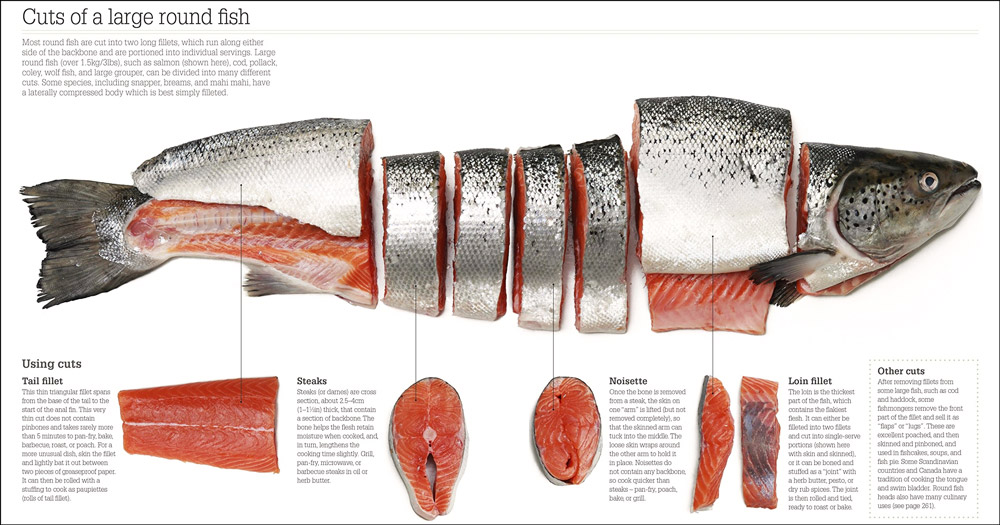
Fish Selection: Picking the Perfect Candidate
In this section, we’ll discuss the characteristics of a suitable fish for filleting, including the species, size, and freshness of the fish. We will also explore the importance of choosing fish with firm flesh and how to assess the quality of a fish before purchase.
Clean Slate: Descale and Prep Your Fish
Properly cleaning and descaling the fish before filleting is essential for optimal results. This part of the review will cover the process of gutting the fish, removing the scales, and rinsing it thoroughly to ensure a clean working surface for filleting. We’ll also provide tips for minimizing mess during the cleaning process.
Filleting Essentials: Must-Have Tools and Equipment
| Fishing Equipment | Description |
|---|---|
| Fillet Knife | A good fillet knife is crucial for precise, efficient filleting. We’ll discuss the characteristics of an ideal fillet knife, such as blade length, flexibility, and sharpness. In addition, we’ll provide recommendations for some of the best fillet knives available in the market. |
| Cutting Board | A proper cutting board provides a stable, non-slip surface for filleting. This section will highlight the importance of using a cutting board specifically designed for fish filleting, as well as discussing the different materials available (e.g., wood, plastic) and their advantages and disadvantages. |
| Gloves | Wearing gloves while filleting a fish can improve grip and protect your hands. We will explain the benefits of using gloves and recommend some of the best gloves for filleting fish. |
| Tweezers or Pliers | Removing bones from a fillet can be a challenging task, but using the right tool can make it much easier. This part of the review will explain the importance of having a pair of tweezers or pliers on hand, as well as providing tips for effectively removing bones from the fish fillet. |
Filleting Techniques
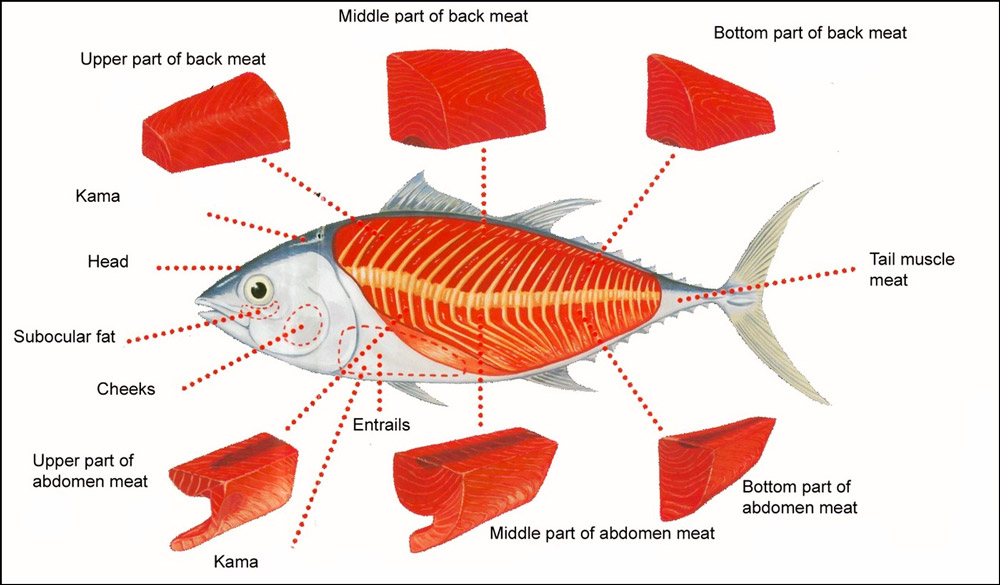
Round Fish Filleting: Mastering the Basics
💢Steps for filleting round fish:
- Start by placing the fish on a clean cutting board, preferably one specifically designed for fish filleting.
- Make a diagonal cut behind the pectoral fin and gill plate, angling the knife towards the fish’s head.
- Guide the knife along the fish’s backbone, making long, smooth cuts from head to tail, keeping the blade as close to the spine as possible.
- Gently lift the fillet away from the backbone, and use the knife to separate it from the rib bones and any remaining pin bones.
- Trim the belly flap and any remaining skin or scales.
Flatfish Filleting: Technique and Precision
💢Steps for filleting flatfish:
- Lay the fish flat on the cutting board, with its darker side facing up.
- Make a shallow cut along the central line of the fish, from head to tail.
- Start at the head end and carefully work the knife along one side of the central line, separating the flesh from the bones.
- Repeat on the other side of the central line.
- Flip the fish over and repeat the process for the other side of the fish.
Fish-Specific Tips: From Salmon to Tuna
| Fish Type | Filleting Tips |
|---|---|
| Salmon | Use a sharp, flexible knife and be extra cautious when cutting around the fish’s pin bones, which are more numerous in salmon. Remove the skin by placing the fillet skin-side down, and carefully cutting between the skin and flesh while holding the skin with your other hand. |
| Trout | Follow the basic filleting technique for round fish, but be mindful of the fish’s smaller size and more delicate flesh. Pay special attention to removing all pin bones before cooking or serving. |
| Cod | Use a sharp, sturdy knife as cod fillets can be thicker and denser. Focus on making clean, smooth cuts to maintain the fillet’s structural integrity. |
| Flounder | Fillet flounder using the basic filleting technique for flatfish. Due to its thinner, more delicate flesh, use a flexible and sharp knife, and be gentle while making cuts. |
| Tuna | Tuna fillets can be quite large and dense, so use a long, sturdy knife to ensure clean, precise cuts. To maintain the high-quality appearance of the fillet, be sure to trim away any bloodlines and dark meat before cooking or serving. |
Deboning and Skinning the Fillets
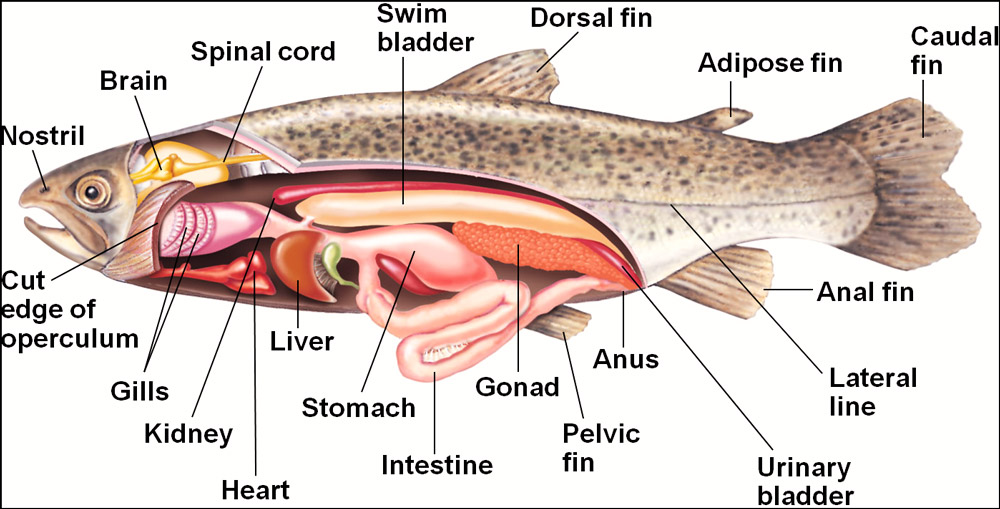
Smooth Moves: Deboning Your Fillets with Ease
💥 Techniques for removing bones from the fillets:
- Use a pair of fish tweezers or needle-nose pliers to remove pin bones.
- Carefully feel along the fillet’s surface for bones, and gently pull them out in the direction of the grain to avoid damaging the flesh.
- For larger bones, such as the rib bones, use the fillet knife to cut along both sides of the bone and lift it out with the knife tip.
Skin to Win: Skinning Techniques for Succulent Fish
💥 How to skin the fillets:
- Place the fillet skin-side down on a stable cutting board.
- Hold the tail end of the skin with your non-dominant hand, and make a small incision between the flesh and skin with your fillet knife.
- Angle the knife slightly downward, and slide it along the skin while holding the skin taut, separating the skin from the flesh in a smooth, controlled motion.
Waste Not, Want Not: Minimizing Loss and Maximizing Taste
💥 Tips for minimizing waste and ensuring clean cuts:
- Keep your fillet knife sharp and clean to ensure precise, clean cuts with minimal tearing or crushing of the flesh.
- Follow the fish’s natural bone structure when cutting, and avoid sawing back and forth with the knife.
- Utilize any leftover fish parts, such as the head, bones, and trimmings, for making fish stock or other recipes to minimize waste.
- Practice good hygiene by keeping your work area clean and sanitized, and wash your hands and tools frequently to avoid cross-contamination.
How To Gut And Fillet A Fish
Let’s be honest: With a mouthful of bones, the fish caught is only half as pleasant, isn’t it? Unsurprisingly, most anglers want to see only the best sides of the fish they catch on their plate, namely the sides of the fillets!
However, first, they must be carefully separated from the rest, preferably so that the fillet is not completely damaged, or later half of the valuable meat will have to be given to the cat as waste. But don’t worry, it’s easy to divide the fish into fillets. If you know how to set the knife, where the fillets are, and what to look for, you can cut any fish fillets yourself. It’s important to have a sharp kitchen knife that can cut right into the bone.
How To Fillet A Fish Youtube
How To Fillet A Fish Step By Step
In this article, I have collected for you the most popular types of fish from which you can make fillets. Let’s take a look at the general principle first.
Step 1
Your fish should always be fresh. Therefore, after you have caught the fish, place it in a cool, fresh place. Then it must be washed thoroughly. Next, clean the fish from the scales, if any, and also remove all unnecessary parts such as the tail, fins, bones, etc. Before cutting the fish, it should first be washed and dried. For fish fillets, it is best to use a flexible fish fillet knife that can be cut well into the bones when cutting fish.

Step 2
When filleting fish, the first thing to do is to remove the head. When filleting fish, cut it with a sharp knife behind the V-shaped gills: on one side, place the knife directly behind the gills and at an angle to the gills. Cut off the middle bone. Turn the fish over and cut in the same way, but cut through the middle bone so that the head is relaxed.
Step 3
To cut the fish in half when cutting fish, use a long fish knife (knife length at least 40 cm). To help you have as little waste as possible when cutting fish, place a knife in the head when cutting fish, and then cut along the large center bone. Always hold the sharp blade of the knife slightly towards the center bone.
Step 4
Cut in half along the center bone and cut to the end of the tail in one step. When filleting fish, move the knife back and forth with light pressure. Remove the fillets, turn the fish and cut the second fillet in the same way.
Step 5
Now carefully remove the fins, tail, and fat around the edges.
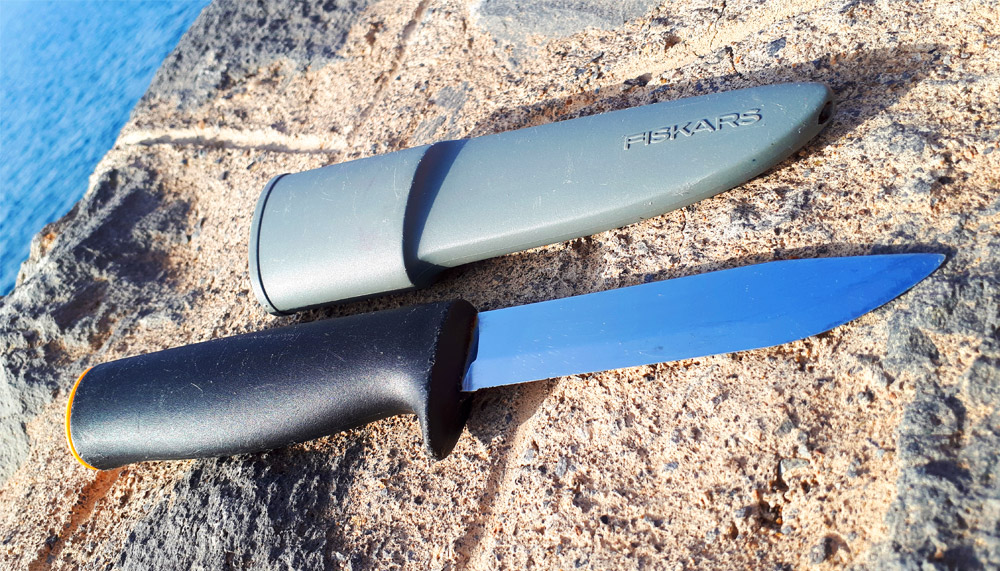
Step 6
The skin of the abdominal flap is located below the central bone. Also, cut it off with a knife.
Step 7
Now, when filleting fish, place the two halves next to each other on a work surface and remove the individual bones using small pointed tweezers. In between, slide your fingers over the fish fibers to feel the individual bones as you fillet the fish.
How to Clean and Fillet a Fish
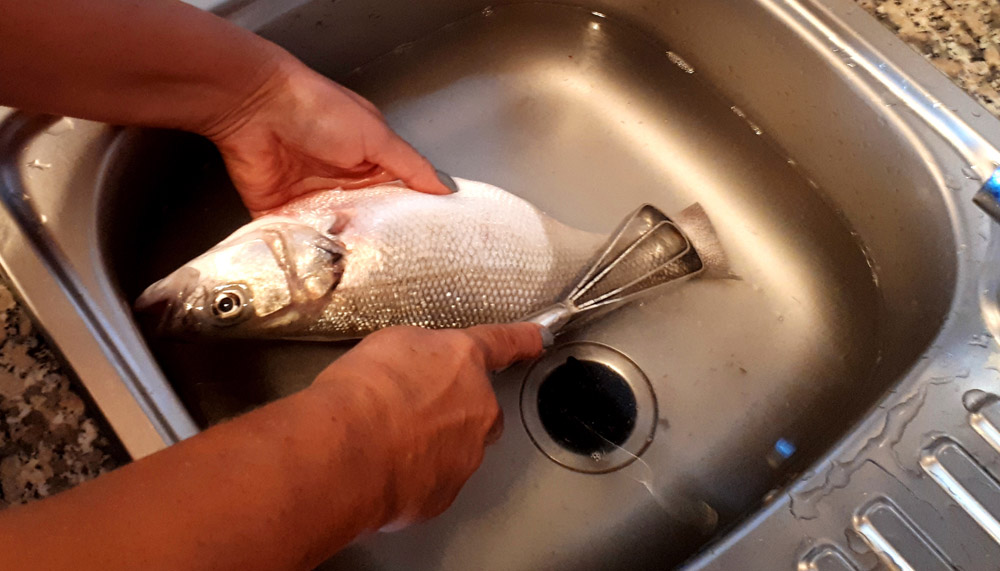
Many of us prefer to peel and butcher fish with a regular kitchen knife. But many cleaning methods may require other tools such as a sharp fillet knife, fish peeler, fork, scissors, tablespoon, grater, rubber gloves, cutting board. As for the latter, it is best to purchase a board with a fish head clip. This will make it easier for you as the fish will be in place during the process.
Cleaning of the river and sea fish is different. Mostly due to the size of the scales. The saltwater one is easier and faster to clean, as it is covered with small scales, which quickly disappear upon physical impact. However, there are some rules to know to make your job easier.
Some types of fish, before removing scales from them, need to be cleaned of a layer of mucus. There are several ways to do this:
- Immerse the carcass in very hot water for 15–20 seconds. The mucus will come off during this time, and you can start cleaning.
- This method is also pretty simple. Rub the product with salt before cleaning. The carcass stops sliding in the hands. When fishing, you can use sand instead of salt. But this method is not very convenient, because then it is difficult to wash the grains of sand from the meat well.
In order to remove scales from the fish, the first step is to fill the sink with water. We lower the carcass into the water. This will avoid unnecessary cleaning: the scales will not scatter around the kitchen, but will settle in the liquid. Next, we cut off the fins so as not to hurt ourselves when cleaning. We firmly take the fish by the head with one hand. We take a knife in the other hand. We begin to clean from the tail towards the head, prying the scales with a fish scaler. At the end of cleaning, rinse the carcass under running water.
How to Fillet a Shark
And so, put the shark on a cutting board and take a sharp knife. It is important. If your knife is not sharp enough, you will fail. Sharkskin resembles leather. You should do a cut right behind the gill cover. Right behind the grill make an incision and this is a general way you can use to clean most fish actually.
So, then run the knife along the top of the backbone. Just make an incision along the top of the backbone and work your way all the way down. Right down to the tail. You should cut away along and around the ribs there and down all the way down to the tail. You should cut all the way down to the belly. And then remove the skin. You have to run the knife, make an incision there, and then run the knife between the fillet and the skin. All is ready!
How to Fillet a Crappie
For cutting this fish, I recommend using a small, flexible, sharp knife Rapala Fish Fillet Knives Classic. Place the crappie on the cutting surface. Position the fish horizontally with its tail on the same side as your dominant hand. This will allow you to run more smoothly. Hold the crappie by the head as you prepare to make the first cut. Make a vertical cut just behind the gills. Insert the tip of the knife between the back of a gill plate and the pectoral fin.
Cut the gills at a slight angle to the head. Continue cutting until you reach the spine, but be careful not to cut it. Run the blade along the spine to the tail. Holding tightly to your head, begin to gradually drive the knife along the entire length of the crappie. Instead of trying to cut through the skin, simply press down on the blade and let the meat break free.
Stop when you get to the back of the fish next to the tail. If you are cutting close enough to the spine, you should feel the outline of each rib as you push the knife through it. Separate the meat from the skin. Bend the fillets back so that they fit snugly against the cutting surface. Then, starting at the tail, slide the knife blade between the skin and the meat and make a clean cut from one end to the other.
The fillet should come off in one smooth piece. At the head end of the fillet, you will find that the ribcage is still attached. Use the curved tip of a knife to circle the edges of your ribcage, being careful not to waste meat. The boneless fillet should be V-shaped. Repeat on the opposite side. Turn the fish over and follow the same procedure, starting with a vertical notch behind the gills. When you’re done, you are left with two fillets that you can cook or set aside for later.
How to Prepare Salmon for Sushi
To prepare salmon for sushi is a snap. I’m sure you can handle it. To make sushi, your salmon must be very fresh. Salmon should be in the form of a skinless fillet. So, first, remove the fatty substance that is sometimes found on the sides. Then check the other side as well. Cut the salmon in lengths to have the width of a nori sheet. You can use a half nori sheet or possibly even a sliver of cucumber you have cut with your sushi cutter to give you the exact length. Then clean the dark side of the salmon to make it easier first cut the slice in half and then remove a thin layer. Finally cut slivers approximately 1.5 by 1.5 centimeters to be used in your sushi roll.
How to Fillet a Tuna Fish
Cutting instructions:
- Carefully cut the belly along the edge.
- Take out the insides.
- Thoroughly rinse the carcass under running water.
- Cut off the head and fins.
- With a knife along the back, we make such a cut so that a fillet layer is formed from the skin to bones. Next, there will be bones and pulp under them.
The whole fish is divided into three main parts:
- Upper lumbar. The leanest, it is customary to cook dishes from it without additional heat treatment – tartar, sushi, slicing.
- Middle, lateral.
- Lower. The meat cut from the front of the belly is the most delicious and the most expensive. It has a bright color and pronounced streaks of fat. And gourmets all over the world are ready to give any amount for their delicate taste.
Tuna has nothing superfluous. The head, fins, and bones with pulp are used to make broths and fish soup. The best slices are for sushi, sashimi, and other dishes. They are called loin. Up to 3 loins are obtained from one tuna, which are then divided into small steaks.
How to Fillet a Bass
Make sure to use a sharp knife as this is very important. A dull knife makes you have more pressure. You got a better chance to slip and cut yourself. So when you start off with the bass, you first pick up the pectoral fin and make a nice shallow cut just behind it. You don’t want to go all the way through the fish.
You end up puncturing the stomach and making a bit more of a mess in the less tasty fillet. So once you are just beneath the skin, you will then go down just behind these pelvic fins. It is about to the middle of the belly from there you are going to cut down and meet the vents of that fish. You should save yourself a lot of time.
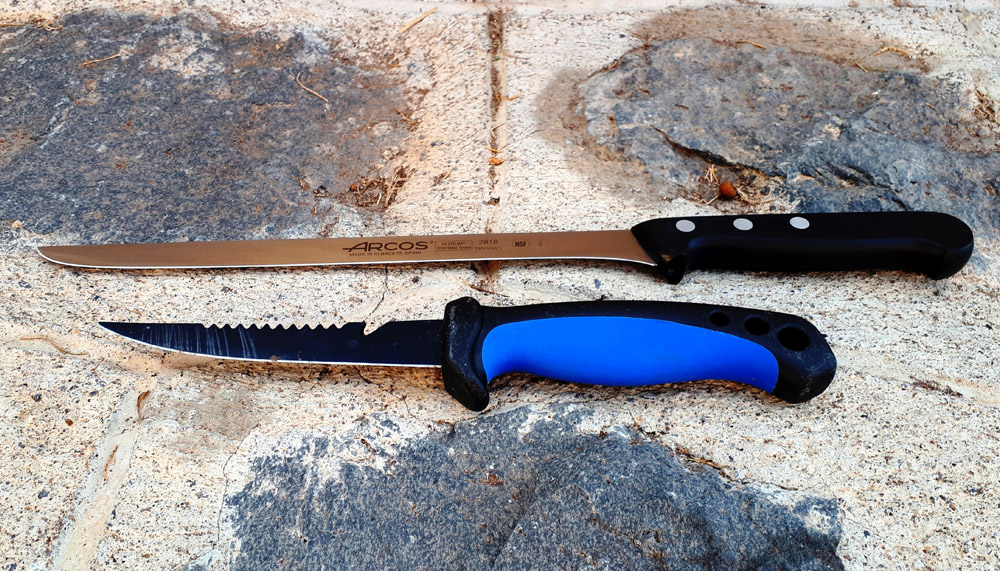
You are kind of pinching the belly up there a little bit to give yourself some working room and then just in front of this anal fin you should place your blade and kind of continue up along the edge from here. You can then kind of just feel along with the point of your knife. You don’t want to push against a bunch of pressure that means you are hitting bone.
We put the fish on its side and cut the abdomen: we start with a small hole. We move to the head. We make a long incision, but it is better not to cut it to the very head, so the fish will retain its shape. We take out all the insides with our hands. Take a teaspoon and scrape off the remaining blackness.
How to Fillet a Flounder Fish
For fillet preparation, it is best to take large fish. Tools should be sharp and have a thin and long blade. Despite the structural features of the flounder, filleting fish is just as easy and quick. If you follow the simple rules for cutting, then you can cope with this task in a few minutes.
Step-by-step instruction:
- The fish should be placed with the dark side facing up. Using a sharp knife, cut the fish along the ridge, cutting to the very bones.
- Then you need to make a cut in the part of the tail so that it is perpendicular to the first cut.
- Using a sharp knife, carefully separate the fillets from the bones. This should be done slowly so that as little meat as possible remains on the bones.
- You also need to separate the second part.
- Then turn the fish over and repeat the same steps.
How to Fillet a Drum Fish
So, to fillet a drum fish, you should use 8 inches Dexter fillet coated knife. This fish has really thick big nasty scales. Firstly, you should do the tip of your knife by the head. Start with this aside, then make a little incision there and go ahead and outline your fish from the head down to the tail which is going along the backbone.
Just like you would do with any other fish all the way down with the tail. And now basically always have one hand on the knife, one hand used to help you separate the fillet from the bone. You should make sure that you get all of the meat. Now once you basically get to the other side and you kind of have this tail section off. Then go from the head and down around this tech fin. You should go right over the ribcage. Do the same with the other side.
How to Fillet a Porgy Fish
To fillet a porgy fish, you should use 7 inches Rapala Folding Fish Pro Fillet Knife. A porgy fish is super flaky and has good meat. You should make longitudinal deep cuts along with the head on both sides. In the resulting incision, insert the knife towards the tail. Move the knife from the head to the tail fin in such a way as to separate the meat from the bones. Carefully remove the rib bones from the pulp to avoid damaging the fillets. And only at the end, cut off the skin.
How to Fillet a Whole Fish
To fillet a whole fish isn’t too hard to do. You just need to know the techniques. Before cooking the fish, get rid of from scales. So, take the blade of a knife and go against the fish scraping up any of those scales. So, to start filleting the fish, you need a sharp knife. As for me, I always use a boning knife because it’s a thin knife that’s flexible. Take your knife and you are gonna go right behind that pectoral fin.
You are gonna slice into the fish behind the head and you are gonna feel resistance. You are gonna feel bones in the fish. Then you should start the knife tight at the tip of the backbone right behind the head gently glide the knife cutting through the skin along the top backbone. Once you get a few inches down, you can pick up the fillet of the fish and rotate it up.
You should see what you are doing. You have to glide the knife gently along the backbone and you want to make sure that you stay along the backbone because you don’t want to take away too much of the flesh of the fish. So, stay close to that backbone gliding the knife pulling back the fillet as you do it. You will see that you come past the backbone and now it’s kind of stomach of the fish. Here keep gliding the knife. So now you have a beautiful fillet. So, repeat the process with the other side.
How to Fillet a Sheepshead Fish
I recommend you use a six-inch curved boning knife. It’s one of the best knives for smaller fish. The first thing you have to do is to start at the head of the fish. You should do with your knife into the scales and get from the head down to the belly. So, go right to the gill plate around the belly. Go from the head along the fish’s spine all the way to the tail.
Then just outline the fillet. Now you got that out of the way. You go from the head with your knife on the spine the entire time really press down on that spine and just go down towards the tail using as many strokes as you need. You have to do that up to the head.
The whole purpose of this prop is just to get to the backbone. So, you got to the backbone right there. You are gonna need to break through the pin bones along the central part of the fish. It’s important not to try to go through ribcage and pin bones but over. So once you are over the ribcage tip of your knife is down on the other side of the fillet. Just continue making your cuts. And you will get a beautiful fillet. Then flip your fish over and do the same thing.
How to Fillet a Blue Fish
It’s better to use a six-inch flexible fillet knife. So, as for me I always feel around the soft part of the head. And I just see where it ends. There you have to make a small incision, then go that around the pec fin down to the ventral fit. Start by going from the head to the tail the very outside edge of the bluefish. Once you do the initial outline you have to take your knife.
You have to make sure it’s on the fish’s spine. You have to go from the tail all the way back up towards the head. Just continue to do this until you get to the fish’s backbone. Once you get to the backbone, you have to use some sharp cut to break through pin bones. Once you do that now the other side of the backbone is exposed. Now you can take your knife, go on the other side of the backbone point the tape of your knife slightly down and just finish out your fillet.
Storing and Cooking Filleted Fish
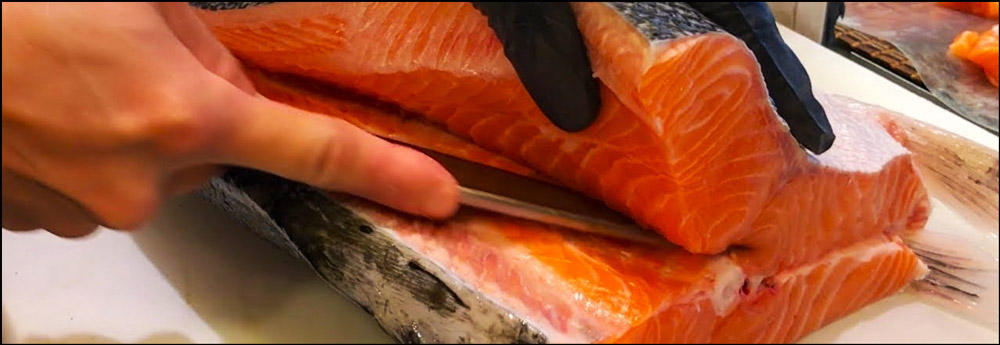
Freshness First: How to Store Your Fillets Properly
🐬 Proper storage techniques for fillets:
- Store fillets in airtight containers or wrap them tightly in plastic wrap or aluminum foil.
- Place the wrapped fillets in a shallow pan filled with ice to maintain optimal freshness and refrigerate.
- Store fillets separately from other food items to prevent cross-contamination and odor transfer.
- Consume fresh fillets within 1-2 days of filleting, or freeze them for up to 2-3 months for longer storage.
Sizzling Success: Popular Cooking Methods for Fillets
🐬 Popular cooking methods for filleted fish:
- Pan-searing: Sear the fillets in a hot pan with a small amount of oil or butter for a crispy exterior and tender, flaky interior.
- Grilling: Cook the fillets on a preheated grill for a smoky flavor and attractive grill marks. Use a fish grilling basket or grill-safe cooking mat to prevent sticking.
- Baking or broiling: Bake fillets in the oven at a moderate temperature, or broil them for a faster cooking time and caramelized surface.
- Poaching or steaming: Gently cook fillets in a flavorful liquid or steam them to preserve their natural moisture and delicate texture.
- Deep-frying: Coat fillets in batter or breading and fry them in hot oil for a crunchy, golden crust.
Flavorful Fillets: Tips for Perfectly Cooked Fish
🐬 Tips for maintaining the quality of fish during cooking:
- Always cook fillets at the proper temperature and avoid overcooking to maintain the fish’s natural moisture, flavor, and texture.
- Handle fillets gently during the cooking process to prevent tearing or breaking apart.
- Use a thin, flexible spatula or tongs for flipping or turning fillets, and avoid pressing down on the fillets, which can cause them to lose moisture.
- Season fillets with salt, pepper, and other seasonings or marinades to enhance their natural flavors but avoid overpowering the delicate taste of the fish.
- Rest cooked fillets for a few minutes before serving to allow the juices to redistribute and maintain a moist, tender texture.
Conclusion: The Key to a Perfect Fillet
Filleting Finesse: Key Lessons to Remember
Good fishing always leads to a good catch. Now it remains to cook the fish deliciously. But before you start cooking, you need a fillet of fish. Do not forget that the catch must be properly stored and also cooled before cutting. To fillet a fish means getting boneless fish meat. I hope my instructions will help you do it right!
Some of the essential lessons to remember from this guide include the step-by-step breakdown of the filleting process, making it easy to understand, and the visual aids in the form of photographs, which offer supplementary guidance.
Practice Makes Perfect: Refining Your Fish Filleting Skills
I wholeheartedly encourage anyone who wishes to enhance their culinary prowess or simply enjoy the exceptional taste and texture of freshly filleted fish to read this guide and put its teachings into practice.
As with any skill, practice is crucial for improvement, and the time and effort dedicated to learning how to fillet fish will undoubtedly be rewarded with delicious, restaurant-quality meals prepared in your own kitchen. So, grab your knife, embrace the challenge, and embark on a fulfilling journey toward perfecting your fish filleting skills.
❓ FAQ: How to Fillet a Fish 🐟🔍
Tags: #how to fillet a fish / #how to fillet a fish step by step / #how to gut and fillet a fish / #how to cook a fish fillet

I live in Tenerife (Canary Islands) for the last 10+ years and share my daily fishing experiences on my website. Many years of personal experience as a fisherman and the vast experience of my friends allow me to write professionally on any fishing topics (from choosing a flashlight and equipment to deep-sea fishing).
All of my advice is based on practical real-world experience and will be useful to both novice anglers and professionals. Read more about the author.
Affiliate Disclosure: FishReeler.org sometimes gets paid for listings, through sponsors or affiliate programs like Amazon, Ebay, Cabelas, Bass Pro Shop, Shimano, Daiwa, Rapala, Renn, Okuma, KastKing, etс. Clicking a link helps keep FishReeler.org free, at no extra cost to you!
About the author: Each article is verified by the fishing expert Sergio Smirnoff. The articles are written by professional and amateur fishermen with 20+ years of fishing experience.
Note: The views and opinions expressed in this article are those of the authors and do not necessarily reflect the official policy or position of any agency. The articles are for informational purposes only, share your opinions in the comments and join the fishing discussions, let's share our fishing experiences together!

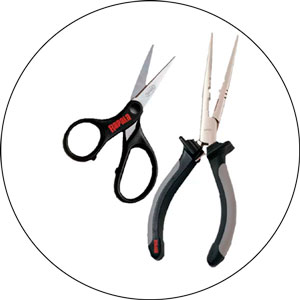
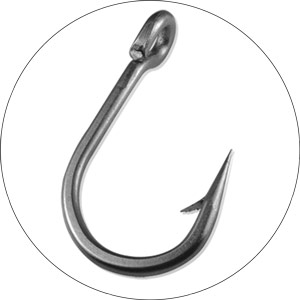
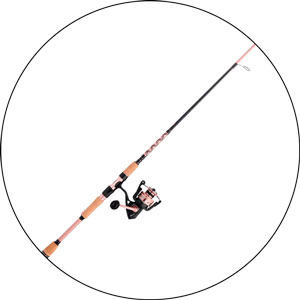
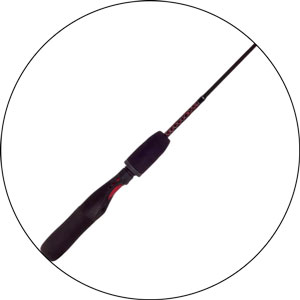
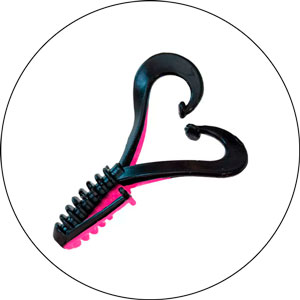
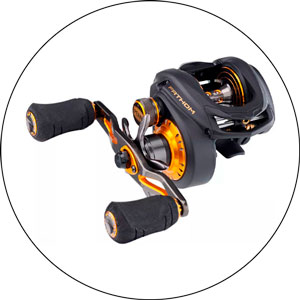
A Finnish knife and scraper to remove the scales is a great choice. I know these products well. Decent choice, I approve. I didn’t fully understand how to make the shaped notch in front of the fish head. Then I started trying it, stuck my fingers under the gills, turned the fish over, and it all worked out. It turns out aesthetically and is easier to remove all the insides and remove the gills. Your article is unusual and caught my attention. I recommend it.
I recently had the opportunity to read a beginner’s guide to filleting fish, and I found it to be an informative and engaging read. The guide covers the basics of filleting fish, including the necessary tools and techniques, and provides step-by-step instructions for filleting several types of fish.
One aspect of the guide that I appreciated was its clear and concise writing style. The author does an excellent job of breaking down the filleting process into manageable steps and providing detailed explanations of each step. The accompanying photographs are also helpful in illustrating the various techniques and cuts involved in filleting fish.
Another strength of the guide is its emphasis on safety. The author stresses the importance of using sharp knives and taking care when handling the fish to avoid injury. Additionally, the guide includes tips for maintaining a clean and organized workspace, which can help reduce the risk of accidents.
One minor critique of the guide is that it does not cover the topic of selecting and purchasing fish in detail. While the author briefly mentions the importance of choosing fresh fish, I would have appreciated more information on how to identify the best fish for filleting and what to look for when purchasing fish.
Overall, I found A Beginner’s Guide to Filleting Fish to be a useful and well-written resource for anyone interested in learning how to fillet fish. The guide provides clear instructions and helpful tips for filleting several types of fish and emphasizes the importance of safety throughout the process.
In conclusion, I would highly recommend this guide to anyone looking to learn how to fillet fish. With practice, the techniques outlined in the guide can be mastered, and the benefits of enjoying freshly filleted fish are well worth the effort.
The guide provides clear and concise instructions for filleting fish, with helpful photographs to illustrate the techniques. Safety is emphasized throughout the guide, with tips for using sharp knives and maintaining a clean workspace. While the guide does not cover the topic of selecting and purchasing fish in detail, it provides useful information on filleting several types of fish.
I would encourage anyone interested in learning how to fillet fish to read this guide and give it a try. With practice, filleting can become a satisfying and rewarding skill, and the benefits of enjoying freshly filleted fish are well worth the effort. So don’t be afraid to grab a knife and give it a go!
However, a minor drawback of the guide is its lack of comprehensive information on selecting and purchasing the best fish for filleting. While this topic is briefly mentioned, a more detailed discussion would have further enhanced the guide’s value.
Despite the minor shortcoming mentioned above, “A Beginner’s Guide to Filleting Fish” remains a valuable and informative resource for those interested in learning this culinary skill. I encourage anyone who wishes to broaden their cooking expertise or simply enjoy the unmatched flavor and texture of freshly filleted fish to read this guide and put the techniques into practice. As with any skill, practice makes perfect, and the time and effort invested in learning how to fillet fish will undoubtedly pay off in the form of delicious, restaurant-quality meals prepared in the comfort of your own home.
The guide is an excellent resource for those looking to learn the art of filleting fish. The guide’s primary strengths lie in its clear and concise writing style, which breaks down the filleting process into manageable steps, and the helpful photographs that accompany the instructions. Additionally, the author’s focus on safety and maintaining a clean workspace demonstrates their commitment to helping readers develop good habits and avoid accidents while filleting.
When it comes to eating fish for survival, it’s important to avoid filleting them as it can lead to wasting valuable nutrients. Instead, make a cut from the vent to the throat and remove the guts. To easily remove the head, make a cut through to the spine behind the gill plate and around the head connecting with the initial slit, then twist it off if necessary.
It’s worth noting that all freshwater fish in the US are generally safe to eat raw in a survival situation if the need arises. Trout sashimi, for example, can be quite delicious.
However, some people might be concerned about the safety of eating raw fish. While it’s true that the majority of fish, whether from saltwater or freshwater sources, are safe to consume raw, this statement is specifically addressing toxicity concerns. There are no poisons in freshwater fish within the continental US that could harm you when eaten. Of course, you might come across some worms in larger fish species, but these would typically pose a problem week, months, or years later rather than immediately affecting you during a survival scenario. Moreover, if you’ve consumed seafood macrofauna, you’ve likely already eaten worms that have been exposed to radiation or freezing temperatures.
So, if you ever find yourself in a dire situation where you need to eat fish to survive, remember these tips and know that raw freshwater fish can be a viable option.
Gutting and filleting fish is actually quite straightforward. There are two main types of fish: flat (e.g., sole, halibut, skate) and round (e.g., mackerel, salmon, trout). Round fish are generally easier to work with, so it’s a good idea to start with them.
To begin, descale the fish using a bread knife, dragging it along the skin towards the head. Do this over a sink or an easily cleanable surface, as scales will fly everywhere. Next, remove the guts by inserting a thin knife into the fish’s “pee hole” near the tail and slicing up the belly towards the head. Pull the guts out and rinse the fish under cold water. Congrats, you’ve just gutted a fish! Make some slashes in the skin, add butter and herbs, and grill for 14 minutes to enjoy.
If you prefer fillets, there’s a bit more work involved. Lay the fish on its side and make a notch on each side behind the head, cutting down to the spine (but not through it). Position the knife parallel to the bone from the notch behind the head and slice smoothly along the fish all the way to the tail, staying as close to the bone as possible. Repeat on the other side.
Now you have two (almost) fillets. You’ll notice small bones in them, which can be felt by running your fingers along the flesh. Remove these bones using a pair of tweezers, pulling them out individually. Voilà, you’ve got fillets!
To gut a fish, you’ll need a few items: very sharp knives, at least one fresh fish, and optionally, a bucket or old newspaper/garbage bag. Cold water is also useful, whether from a hose, sink, or lake/stream.
Since you didn’t specify descaling or filleting, I’ll focus on gutting, which is the most basic method and sufficient for fish like rainbow trout.
First, ensure the fish is dead, and lay it down on the optional newspaper or garbage bag. Assuming you are right-handed, position the fish with its head to the left. Grasp the tail firmly with your right hand and insert the knife into the fish’s softer underbelly, just left of the solid tail muscles. There should be a small slit where fish lay eggs/eliminate waste, which is an ideal starting point. Cut towards the head using a gentle seesaw motion.
Hold the fish still with one hand flat on top and the other guiding the knife. The cut should follow the belly line from just in front of the tail to the head end of the cavity. Once you reach the end of the cavity, you’ll have opened the fish.
For gutting, you can use a bucket if desired. Either use your hand or the knife to separate the tough bits. Lift the flesh on top of the belly slit and empty the contents onto the newspaper or into the bucket. Scoop out most of the innards with your hand and use the knife to carefully slice any connective tissue on the outer sides of the cavity. Rinse the fish with water, scraping a bit near the spine to ensure all bits and blood are removed. You may want to run the point of the knife along the spine for a thorough cleaning. Rinse again and swish the water around with your hand.
Now you have a clean, gutted fish ready for cooking and eating. Enjoy!
The method described for filleting a fish may not be the most efficient one, as there are better ways to do it professionally. Following this technique could result in leaving behind a significant amount of meat, since fish ribs are curved, not flat.
A more appropriate way to fillet a fish is to cut along the top of the fish from front to back, keeping the knife close to the spine and rib bones. This method is relatively easy with a sharp knife and leaves very little meat behind.
It’s important to note that not all fish can be filleted using this technique, as some have different bone structures. For instance, a pike requires a unique filleting method due to its distinct bone structure. Always be sure to research the specific fish species you’re working with to ensure the best filleting results.
If one aims to fillet a fish, it’s possible to slice the fillet after descaling or removing the skin and then discard the rest. Fillets are a great choice when consuming fish that may have higher mercury levels, as you can trim the fat, which contains more mercury than the meat. Fillets are also convenient for dealing with troublesome bones, such as those found in halibut or catfish, and can be easily marinated or breaded.
On the other hand, there are some fish, like panfish or trout, that can be prepared with the skin and everything else intact. In this case, you may remove the scales if desired, eliminate the gut pouch, cut off the tail, and make a 360° cut right behind the gills. The result will resemble the headless fish often sold in markets. This preparation method is perfect for situations like camping when there may not be adequate time or facilities to store and refrigerate the fish. You can cook the fish by skewering it on a spit, wrapping it in tin foil, or pan-frying it with some butter.